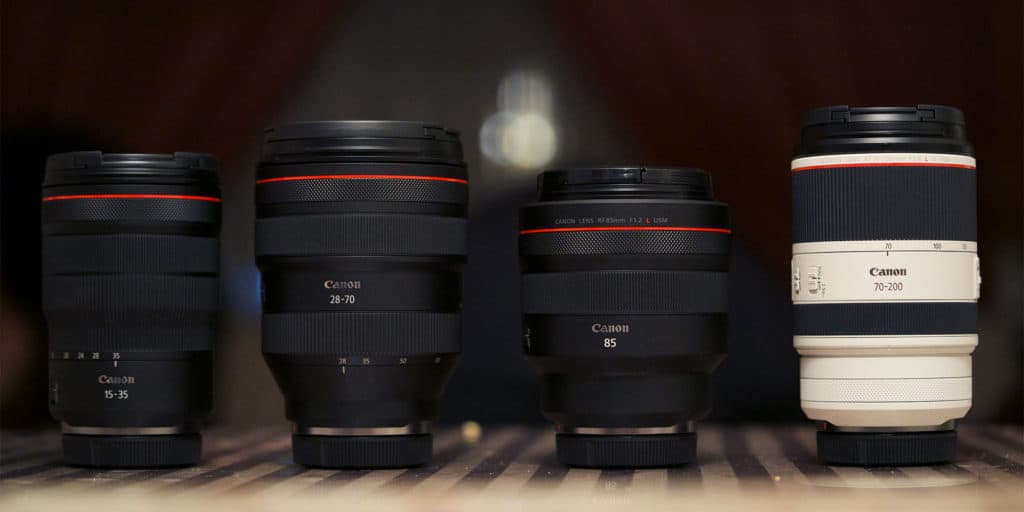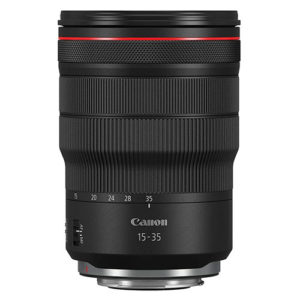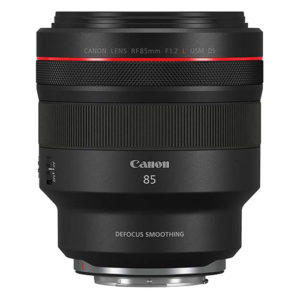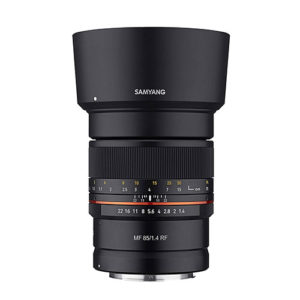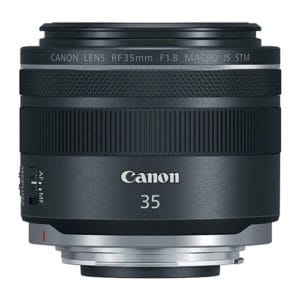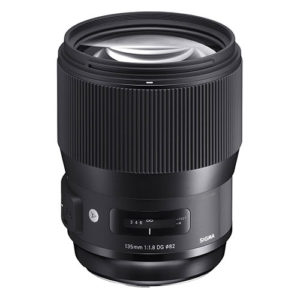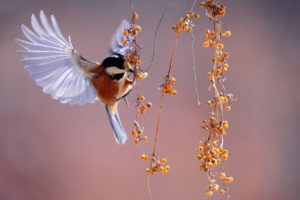Wedding photography is a tough gig. Some parts of the event go according to plan, accepting a photographer’s input, and providing time to set up and think.
Portraits are portraits, after all, and the type of event doesn’t matter all that much.
But other parts of the day, like the actual wedding ceremony, are fast-paced, high-pressure events for the photographer.
You need equipment that works right the first time, that always does exactly what you ask of it.
The Canon EOS-R mirrorless cameras are great for all sorts of photography, weddings included.
They produce sharp, high-resolution images that will make brides smile for years to come.
But the images are only so good as the lens that took them, no matter what sort of megapixels and processing power the body has.
So let’s take a closer look at what are the best lenses for wedding photography.
Best Wedding Zoom – Canon RF 70-200 mm f/2.8L IS USM
The Canon RF 70-200 mm f/2.8L is a must-have lens for wedding photographers.
It’s a stunning piece of engineering, as it has been since the first L-series version rolled out decades ago.
Everything about this lens is perfect for wedding photography and so many other photo gigs as well.
Among other plusses, the focal length is perfect for both ceremony and portrait shots.
At first glance, you might think that this lens is too long, but most photographers wind up shooting ceremonies from quite a distance away.
Even if you can get close, the range between 70 and 135 is the perfect place to be for portraits.
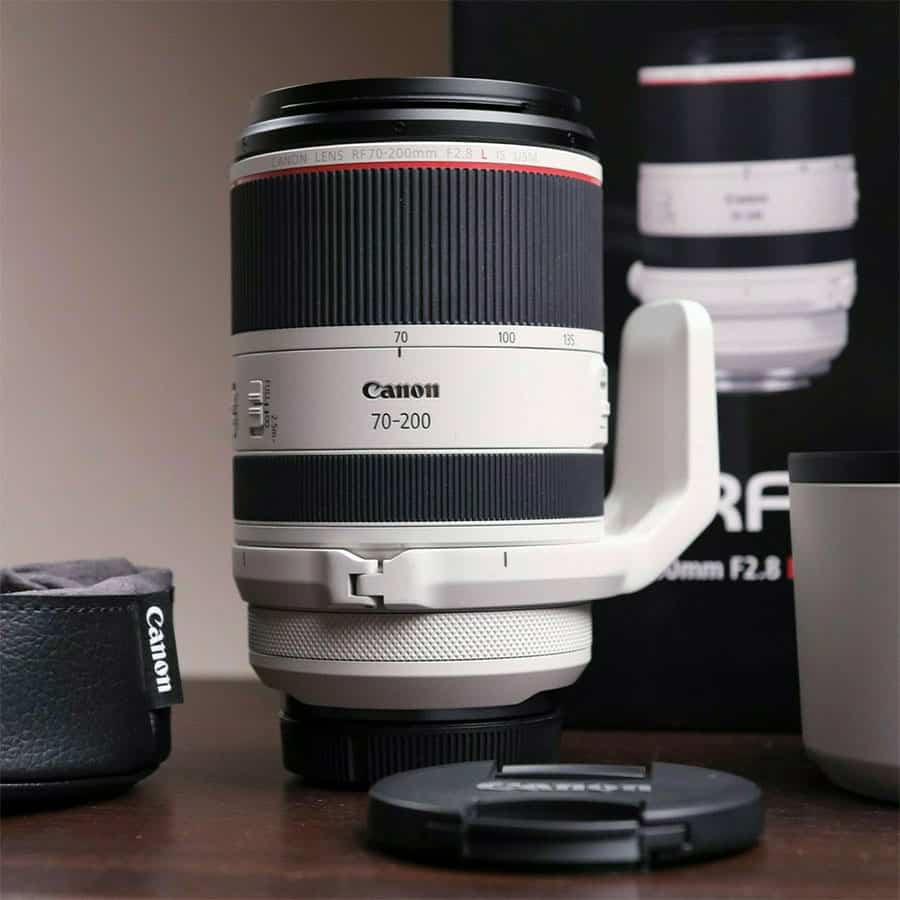
The lens is fast, too, in many respects. The aperture at f/2.8 provides plenty of low-light options.
Bokeh for portraits is pleasant. Many portrait artists might want a faster lens, but truthfully anything less than f/2.8 is seldom useable for a working photographer.
The autofocus is fast and accurate with minimum hunting, which is helped by a range selector switch on the lens. The IS is very good as well, with several modes to match your method of shooting.
The RF redesign of the 70-200 mm has added even more to rave about. It’s now smaller than ever before, with the overall length ranging from just 5.75 inches to slightly over 8 inches.
It weighs only 2.8 pounds, so it’s easy to handle for long ceremonies, too.
With a minimum focusing distance of just 2.3 feet, it’s excellent for macro-style shots even though it’s not branded as such.
The lens has two nano USM autofocus motors, which is a new design for Canon. It’s a nice feature, and the ultrasonic motors are great if you are shooting video.
There isn’t much this lens doesn’t do, which is why it’s always been one of Canon’s top sellers.
It’s a favorite among wildlife and sports photographers, too. With this lens and a wide-angle version on another body, you’re pretty much covered for whatever the bride and groom throw your way.
Best Fast Zoom for Weddings – Canon RF 28-70 f/2L USM
The 70-200 mm is slightly too long for some parts of the wedding day you need to shoot. Specifically, it’s not great for wide-angle group shots.
Getting the whole wedding party in the frame, or shooting the entire venue as an overview, isn’t its forte. To do those things, you’ll want to have a wide-angle option as well.
You could take a few tactics here, but I like to keep a fast wide-to-standard zoom on a second camera body.
That way, it’s ready to go should something go wrong with my primary setup. And I can quickly grab it for the odd wide-angle shot I need to grab.
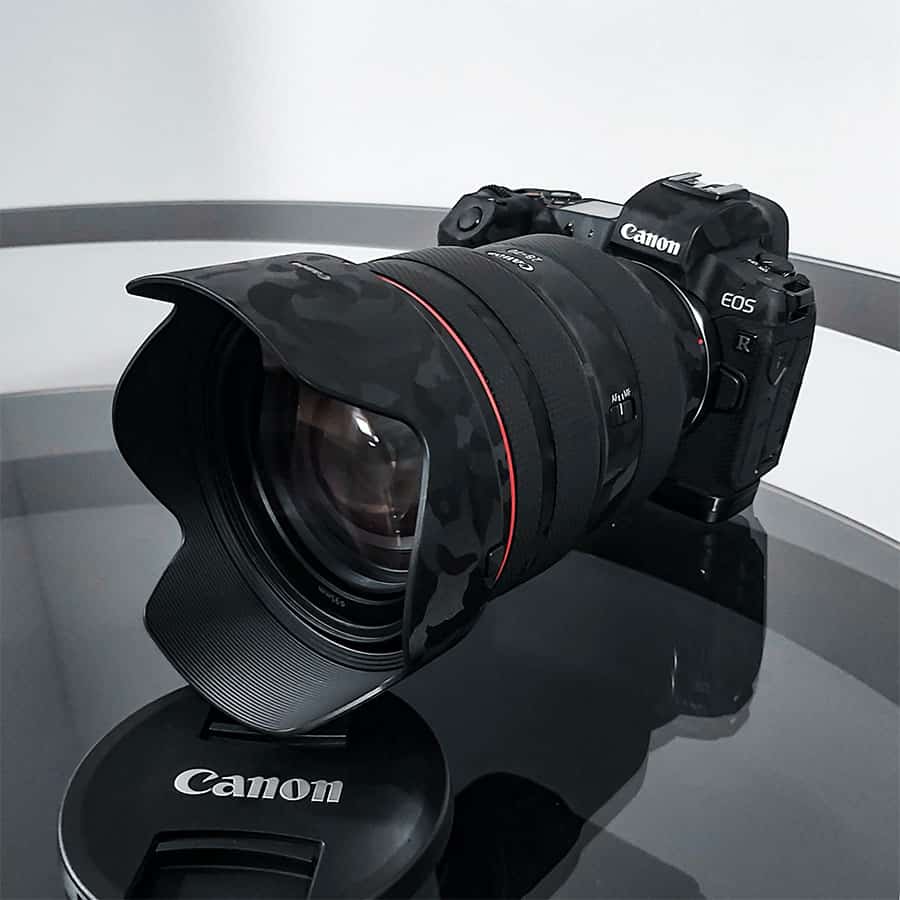
Canon is currently making two outstanding lenses that work well for this task.
The choice depends on what’s more important to you, a faster f-stop or a wider field of view.
For weddings, I would choose the f-stop.
The Canon RF 28-70 mm f/2L is faster than any other L-series zoom I know of. It’s a monster, too, as you might expect from such a fast zoom.
The screw-on filter size is a whopping 95 mm, and the lens weighs in at over three pounds.
The only problem with this beautiful lens, besides its size, is its lack of optical image stabilization.
Since it’s fast and somewhat wide, that shouldn’t be a big problem. But care would need to be taken at the upper end of the zoom range during low light.
The runner up is the equally capable and maybe slightly more versatile Canon RF 24-70 mm f/2.8L IS USM.
The advantages of giving up a full stop of light are getting Canon’s optical image stabilization system and a slightly wider field of view.
It’s over a pound lighter, too. It accepts 82 mm screw-on filters.
I also like to carry a super-wide-angle prime lens in my kit, so for me, the f/2 is the better choice.
If I were looking to make a two-lens camera bag, I might be more inclined to pick the 24-70 mm for its slightly wider field of view.
Wider-Angle Zoom for Group Shots – Canon RF 15-35 mm f/2.8L IS USM
Super-wide angle lenses are fun to play with at some weddings, but I generally find their utility limited.
This lens provides an excellent zoom range between the super-wide 15 mm and a more typical 35 mm.
The zoom range is key to its success, I think, because if I just wanted a super-wide, I would be more inclined to pick up a less expensive prime lens.
It’s also interesting that this wide-angle lens features a built-in optical image stabilizer, something that most wide lenses forgo.
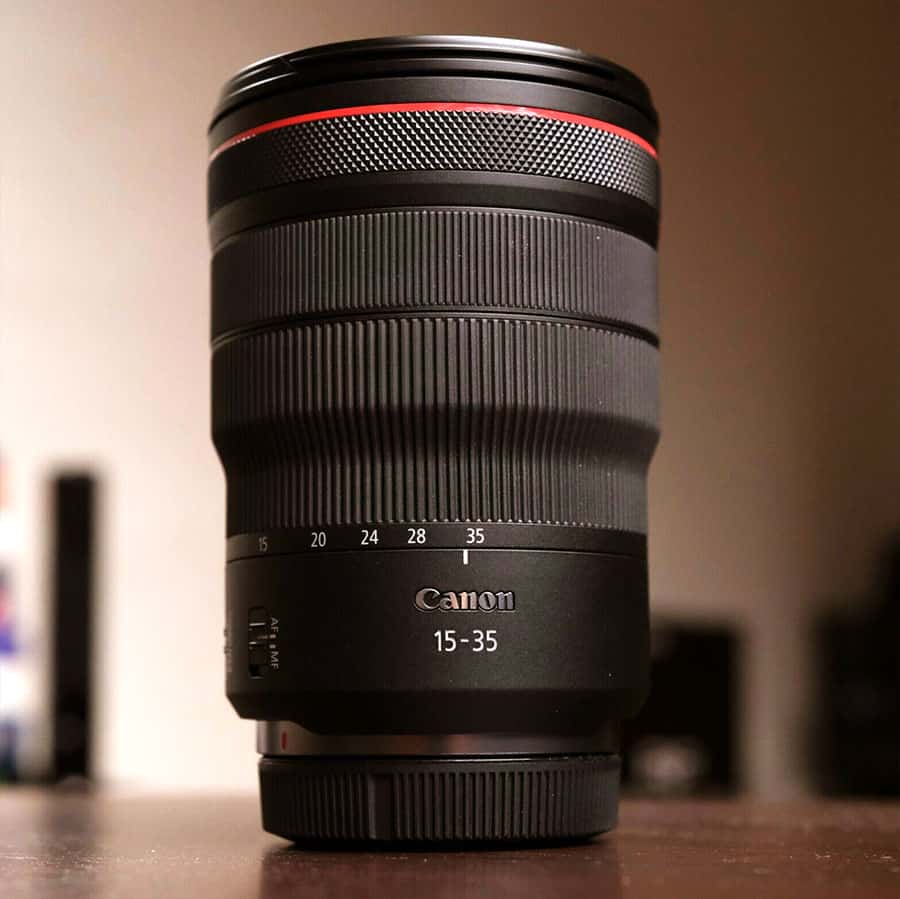
For weddings, this lens proves its value quickly.
It can shoot expansive indoor scenes with ease.
Group shots and candids of the bride getting ready in her room are easy to frame, for once.
It is also the perfect lens to use for the big group shots where there are many people.
Instead of backing way up into the bushes, you can frame the photo as you’d like to without cropping people out.
Late-night receptions are no problem for this lens, either. This lens’s zoom range provides so many creative opportunities, and the constant f/2.8 aperture makes it all happen beautifully.
Best Fast Prime for Portraits – Canon RF 85 mm f/1.2L USM DS
Shooting with prime lenses at a wedding is a matter of personal preference.
The single advantage of prime lenses, as I see it, is that they provide a way to get even more light with wider apertures.
There are many other benefits, too, including fewer distortions and overall better image clarity.
But when compared to the zoom lenses above, these are minor improvements for a fast-paced event.
Canon’s RF 85 mm f/1.2L is fast with its super-wide aperture. It’s a big piece of glass, with nearly three pounds of total weight.
It does not have IS, which is unfortunate for low-light work, but it does allow you to keep shooting well after dark.
The 85 mm focal length is an excellent place to be, with plenty of utility in all portraits and ceremony shots.
If you have enough space to move around unencumbered, you could probably shoot an entire wedding with this one lens.
A good quality runner up to this lens is Canon’s RF 50 mm f/1.2L USM normal prime lens.
Normal lenses are one-to-one magnification, meaning that they produce images with the least amount of distortion. I like the look of the 85 mm for portrait work, but the 50 mm provides a slightly wider option that is useful at weddings.
Budget Option Fast Prime – Rokinon 85 mm f/1.4 Autofocus for Canon RF
When looking at prime lenses, there are a few companies that are making discount versions available.
Rokinon makes some fabulous lenses that have impressive optics for their price point.
Their newer models for mirrorless systems have autofocus.
The Rokinon 85 mm f/1.4 is an autofocus lens comparable to Canon’s.
It isn’t quite as fast as the Canon, and the autofocus system isn’t nearly as good.
But at a third the price, it’s worth picking one up to keep as a backup if nothing else.
However, this lens is built for the standard SLR EF-mount, so you’ll need to use an adapter on an EOS-R camera.
It should be noted, especially for wedding photographers, that these lenses are pretty new.
All of the bugs have not been worked out of their autofocusing systems yet.
I wouldn’t want to shoot a wedding with only this lens, but if I’m using it in addition to an L-series zoom, then it’s a fine addition to my camera bag.
Anytime I try new lenses like these, I like to run them through their paces on my own to make sure there aren’t any quirks I need to know about before I take them on paying jobs.
Fast and Wide-Angle Prime – Canon RF 35 mm f/1.8 Macro
When shooting a wedding with prime lenses, you want to have a selection of focal lengths to choose from.
I would start with the 85 mm, the most useful for the ceremony and general portraits.
My next move would be for something wide, and the Canon RF 35 mm f/1.8 Macro fits the bill.
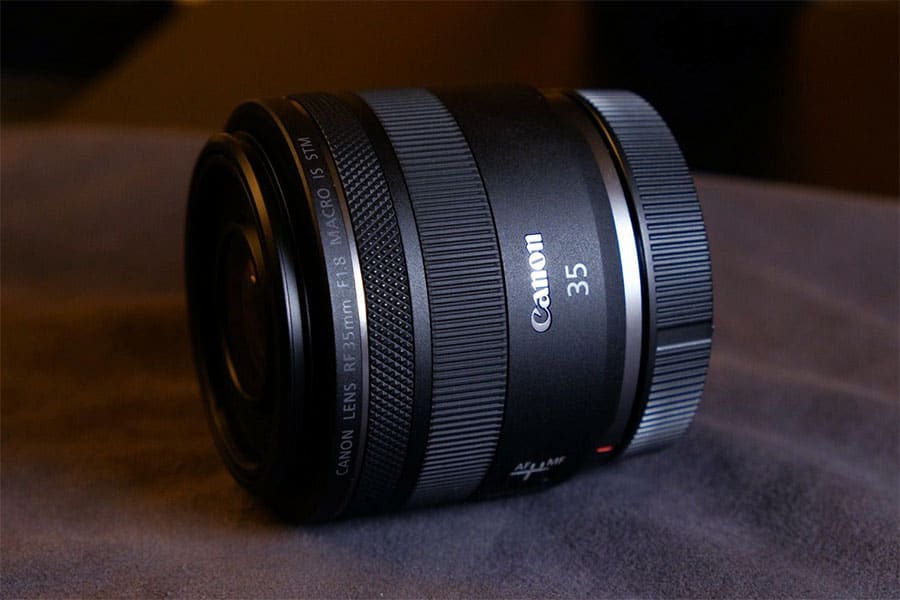
This is a reasonably inexpensive lens compared to the others. It’s not an L-series professional lens, and it features Canon’s less fancy STM autofocus drive system.
It still produces excellent images, however, making it well worth the space in your camera bag.
The lens’s macro feature is useful to have as well, though I prefer to have a macro lens with a little more reach.
Super-Wide for Fun Group and Ceremony Shots – Sigma 14 mm f/1.8 Art for Canon EF (Adapter Required)
No matter what other lenses I have in my bag, I always make a place for something super-wide.
I’m not particularly eager to spend a lot of money here, because honestly, this is more of a plaything.
But they produce such cool photos. At weddings, they’re wonderful for ceremony shots that I know no one else can get.
I can get everything in the frame, with all sorts of incredible details that will thrill and surprise the bride and groom later on. Look, Uncle Bill was asleep!
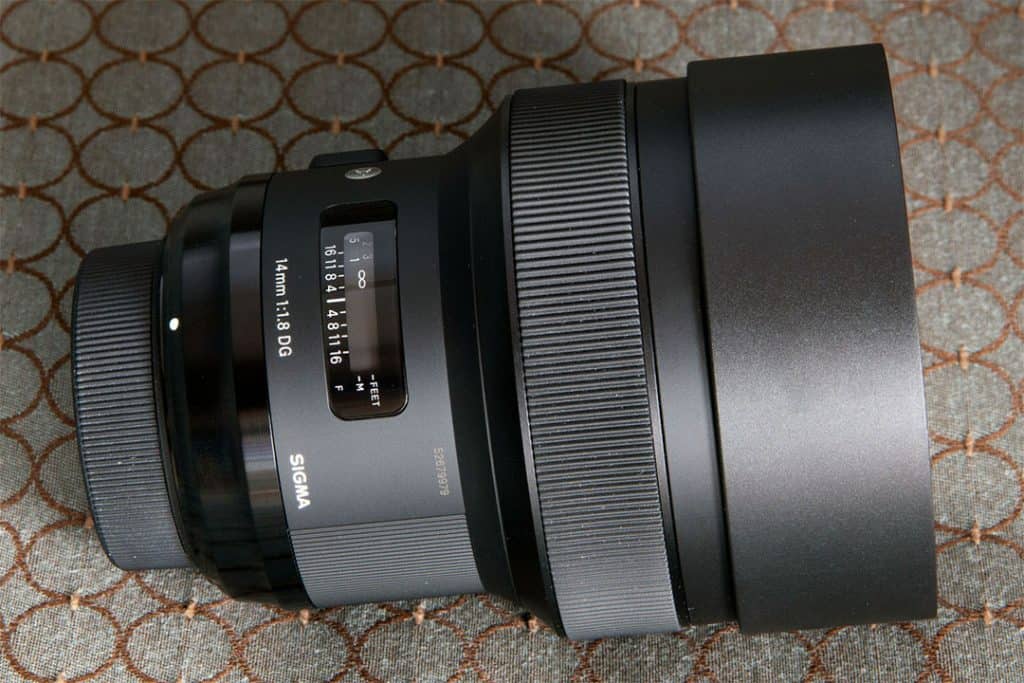
Sigma Art-series lenses have been a favorite for a while.
They produce a super sharp image and are plenty fast.
Unfortunately, they don’t yet make them for the Canon RF-mount, so you’ll need to use an adapter.
The Sigma 14 mm f/1.4 Art is worth a look.
A budget option is the Samyang AF 14 mm f/2.8. It’s not quite as wide, but Samyang lenses have sharp optics. I’d keep an eye on its autofocus system, but it is made for the RF-mount system right out of the box.
Longer Portrait Prime/Macro Lens – Sigma 135 mm f/1.8 DG Art for Canon EF (Adapter Required)
The last lens of note for weddings is a longer prime for portraits, close-ups, and macros.
Unfortunately, Canon doesn’t yet make a longer prime lens for the RF-mount.
The Sigma 135 mm f/1.8 Art is the best option available right now. There no IS, and the minimum focus distance is an unimpressive 34 inches.
But it’s also not unreasonably large, at only four inches long and two pounds. If you need a better macro lens, some older Canon EF 100 mm models are worth a look.
This Sigma is a Canon EF lens, so you will need the adapter to run it on the EOS-R bodies.
Wedding Lens Guide and FAQ
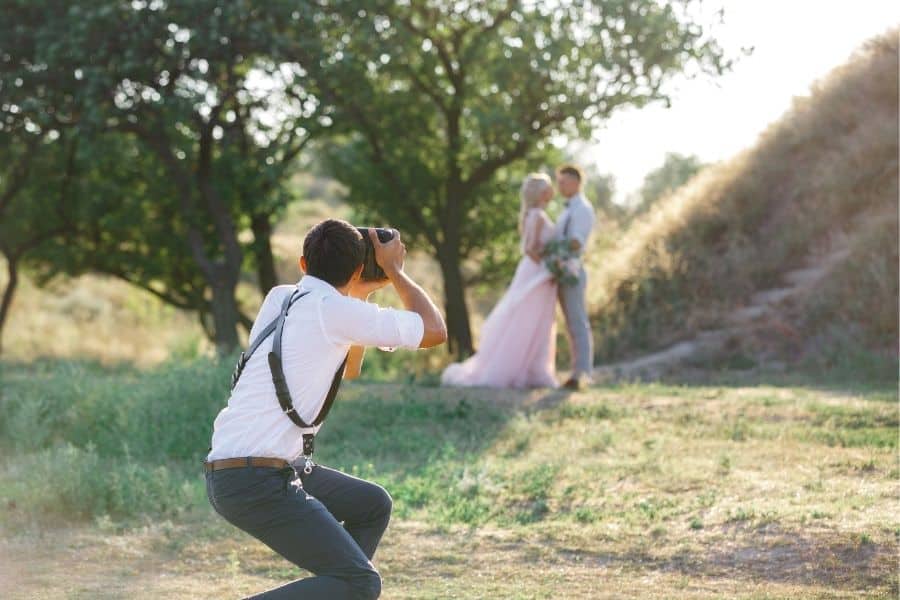
What Makes the Best Wedding Photography Lenses?
The exact lenses you choose for a wedding depends on the setting and time of the ceremony.
While every photographer is bound to have their favorites, sometimes they wind up farther away or closer to the action than they’d like.
Weddings are complicated events to shoot, and it’s helpful to break up the schedule based on the shooting conditions.
The actual wedding ceremony is probably the most challenging part and is also where you have the least control over posing and lighting.
You customers will want both close-up and wide-angle shots, so you’ll need to have both ready to go.
The only good way I’ve found to pull this off is to have two cameras set up–one with a good telephoto and a wider-angle zoom.
If I have the luxury of having a second photographer or assistant with me, I always give them the wide-angle lens and ask for shots of the crowd and overall scene.
Pre- and post-ceremony pictures are all about portraits, both candid and posed. Depending on the setting, I might break out my favorite prime lens for a shallower depth of field or better bokeh.
Most of the time, though, I stick with my trusty L-series zooms. They get the job done with no fuss, and at f/2.8, they produce a pleasing portrait that’s hard to beat. My prime lenses are slightly faster, but portraits at less than f/2.8 are challenging to pull off, especially in a fast-moving wedding shoot.
The point is that most photographers are going to need a selection of lenses to pull from going into any wedding.
Even if you have seen the venue and have a solid plan of action, things can change at the last moment. Suddenly, you’re at the back of the room instead of at the front of it.
Fast lenses are critical because so many weddings, especially destination ceremonies, occur around sunset. By the end of the ceremony, the light will be fading for sure.
Are L-Series Lenses Worth the Extra Cost?

The short answer from my experience is yes. L-series lenses represent the best products that Canon can make for their cameras.
They aren’t free from problems, but they are built tough, and they seldom fail.
They’re weather-sealed, so drizzles and outdoor shooting can be handled more or less worry-free.
Canon also has a great service program, and if you’re registered as a professional photographer with them, they can get your gear back to you very quickly or even provide loaners.
The L-series lenses with their distinctive red bands are expensive, however. You certainly can walk into a wedding and use any other lens that suits you.
But weddings are demanding venues where there are no second chances. You can repeat some staged photographs, but you can’t repeat staged photographs taken on the bride and groom’s special day. Candid photographs taken on the big day are irreplaceable.
All of this is to say that the photographer needs to get the shot without failures and without excuses.
NASA can abort or delay rocket launches when things go poorly, but wedding photographers cannot. You need to have backups to your backups and be ready to implement them at a moment’s notice. That means multiple bodies and lots of lenses that fit them.
If I look through my portfolio of weddings that I have shot, I probably couldn’t tell you which pictures were taken with L-series lenses and which were not. In the end, all that matters is getting the shot in the best possible quality. It is far more about reliability than it is about the name brand of the lens.
The advantages of the L-series lenses are that they are the most reliable option in every way.
Many photographers disagree with me here, but I would never dream of shooting an entire wedding on manual mode or without autofocus. I need my creative time to frame the shot and stage everything perfectly, and most of the time, I don’t have time to deal with creative camera settings.
I want the autofocus to lock quickly on the first try as sharply as possible. I need the exposure to be fool-proof. L-series lenses mean that these simple requests have the highest chance of being fulfilled.
Focal Length and Aperture for Weddings
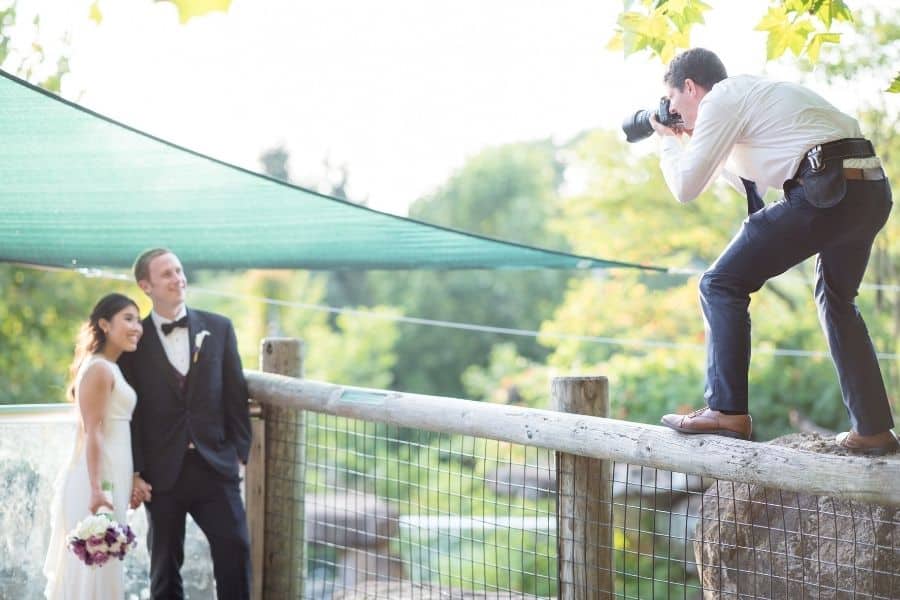
I don’t think I could pick one prime lens to shoot a wedding if my life depended on it. Perhaps, if it were a small ceremony in a small venue, a 50 mm normal lens would suffice.
But that would require being very close to the action and very far away for group shots.
When you think of all that goes into a wedding ceremony and all of the photos that modern couples want to be taken, it’s hard to imagine a minimalist approach. My favorite lens for most parts of the ceremony, receptions, and even some portraits is the RF 70-200 mm f/2.8L.
This lens has a fantastic zoom range that can magnify details, like exchanging rings or the kiss, while also zooming out for beautiful portraits.
It’s one of my favorite lenses of all time–it’s sharp throughout its range, and it is excellent in low light. The image stabilization is superb, as well.
The runner up is the matching but wider-angle RF 24-70 mm f/2.8L. This is my go-to lens for portraits and scenics, especially the group shots of the wedding party.
Just as or even more critical than the focal length is the aperture for wedding shoots. Ceremonies nearly always occur in poor lighting conditions, and flashes are nearly always the wrong solution to the problem.
A little bounce light can sometimes help, but more often than not, the better solution is a faster lens.
The L-series zoom lenses mentioned above are fast at f/2.8. Yes, there are plenty of prime lenses on the market that are faster, but these lenses offer the perfect balance of low-light capability and focal length range.
Prime Versus Zoom Lenses for Weddings
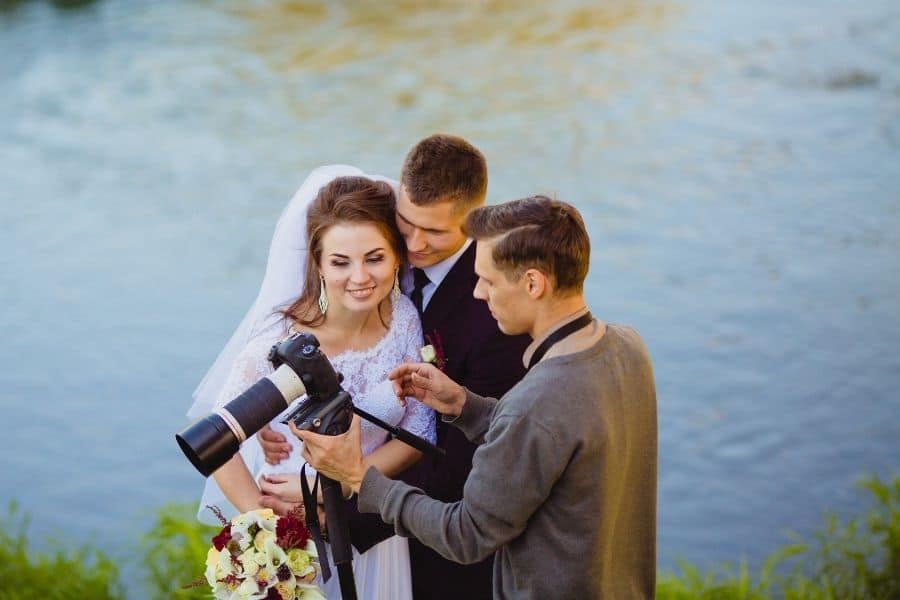
I’m a firm believer in the zoom lens for wedding ceremonies.
But if you have the budget for getting a few prime lenses, they produce some wonderful and creative images before and after the big moment.
I like to arrive at venues well before the guests, while the vendors are still setting up.
I’ll walk around and scout locations for later in the evening, but I’ll also snap pictures of the flowers and place settings. These are great shots for wedding albums and artwork, and since there is plenty of time and no rush, I usually get some macro details of the cake and flowers.
Prime lenses are perfect for playing here, and if I have an f/1.4 on me, it can make some stunning images.
Another place that primes can come in handy is during the post-ceremony portrait session. Right after their vows, bridges and grooms usually break away from the crowd for a few images with the wedding party.
This is an excellent time for playing with a portrait prime.
I would still prefer my RF 24-70 mm, which would allow me to alternate between full-length portraits and headshots. But to each their own.
Works Well Under Pressure
This niche of photography is no joke–it might just be the highest-pressure type of work a shutterbug can have.
Like journalism or sports photography, there are no second chances. Nearly every wedding photographer I know works on the “shoot now, ask questions later” plan.
There will be lots of time to second guess your choices and make changes in post-production. But during the ceremony, just take all the pictures you can.
This policy tends to defer some of the skill to our equipment. In the days before all-digital and fully-automatic camera bodies, photographers would take fewer pictures.
That meant they had more time between shots, which means they had more time to set up for shots.
Whether or not these photographers of yesteryear got the same or better shots is up for debate. My guess is they missed a lot of opportunities, not that they’ll ever admit it.
This touches on what I think is maybe the most critical aspect of shooting a fast-moving wedding ceremony–the need to take images quickly. To be flexible in your shooting, both in terms of where you are shooting from and how things At some point in every wedding ceremony I have ever shot, I’ve just kept taking pictures and started praying that my camera and lens would keep up while I could not.
Maybe that sounds a little dramatic, but the point is simply that you don’t have time for sub-optimum equipment.
You don’t want a wonky autofocus searching for a lock while the couple kisses.
You don’t want an IS error message flashing as the bridge walks down the aisle. You cannot afford to have the aperture lock open and over-expose your images into oblivion.
Not all wedding shoots are high-stress affairs, and every ceremony has slower-paced times when the photographer can breathe, relax, and exercise their creative muscles.
During those times, I turn my selector to manual-mode and begin having fun.
This fast-happening action means that two features of lenses are essential for weddings–image stabilization and fast autofocuses. Image stabilization means that you can continue to take hand-held shots long after you would be able to otherwise. It means that you don’t have to carry or use a tripod, a bummer at wedding ceremonies because it ties you down to one place.
That’s fine when doing portraits, but for candids, it’s a real drag.
A fast and accurate autofocus is another must-have. Less expensive lenses tend to have cheap drive motors that take longer to lock on to the subject.
No matter how good your body is, if you put a cheap lens on it, you will get fewer images in sharp focus.
Adapting your EF- Lens Collection to the RF- Mount

Many photographers who have been shooting with Canon for awhile wonder if it’s worth switching entirely over to the RF-mount system. If you have legacy EF-mount lenses, there’s no reason you can’t use them on your EOS-R cameras.
All you need is the EOS EF to RF adapter. It makes all of the features of your EF lenses work on your new R-series body.
If you’ve already invested a lot of money in your lens collection, chances are it will still cost you a pretty penny to upgrade to the new series RF lenses.
The adapter allows you to use your older collection with excellent results.
Conclusion
Every wedding photographer comes up with their workflow and techniques after a few ceremonies.
The most significant consideration is ensuring that they have a variety of lenses that will meet whatever crazy situations get thrown at them.
They need the best equipment that will never let them down.
Do you shoot weddings, and if so, what do you think the perfect RF wedding lens is?

